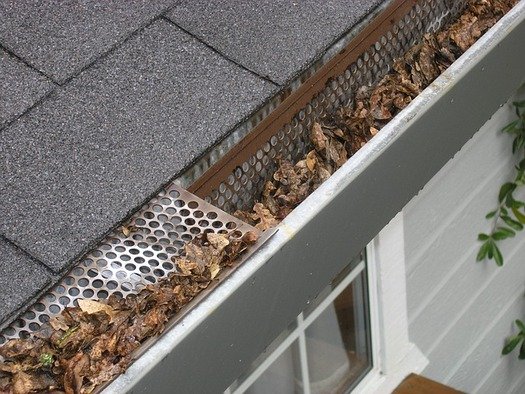In the fast-paced realm of modern cooking, the microwave has earned its rightful place as a kitchen essential. It’s a trusted ally for reheating leftovers, defrosting ingredients in a pinch, and whipping up quick meals. However, while our microwave ovens serve us faithfully, they often bear the brunt of culinary mishaps – splatters, spills, and the stubborn residue of heated meals gone awry. If you’ve ever opened your microwave to find it marred by unsightly stains, it’s time to embark on a journey of microwave cleaning mastery. In this comprehensive guide, we will unveil a treasure trove of tips and tricks to transform your microwave from grimy to gleaming, without the hassle and frustration of scrubbing for hours.
We’ve all been there – an erupting bowl of pasta sauce, an overzealous bowl of oatmeal, or a seemingly innocent cup of soup that decides to stage a coup. These kitchen calamities can leave our once-pristine microwaves looking like a battlefield. But fear not, for in this guide, you’ll discover the secrets to microwave cleaning that will have you wielding your sponge and cleaning supplies with newfound confidence.
From quick and easy solutions for minor spills to deep-cleaning techniques for stubborn, baked-on messes, we’ve got your microwave-covered. We’ll even explore preventative measures to help you keep your microwave cleaner for longer, so you can spend less time scrubbing and more time enjoying your culinary creations. Let’s walk you through the most effective methods for cleaning your microwave, ensuring it remains a spotless and odor-free kitchen companion.
Why Cleaning Your Microwave Matters
Before delving into the cleaning techniques, let’s understand why keeping your microwave clean is essential:
- Safety: A dirty microwave can become a fire hazard. Food particles and grease can ignite when the microwave is in use, causing flames and smoke. Regular cleaning reduces this risk.
- Hygiene: Food splatters and spills can harbor harmful bacteria and pathogens. Regular cleaning ensures that your microwave is a safe environment for heating and cooking food.
- Efficiency: A clean microwave functions better. Residue and dirt can affect its performance, leading to uneven heating and longer cooking times.
- Odor Control: Lingering food odors can permeate other dishes cooked in the microwave. Cleaning helps eliminate unpleasant smells, leaving your food tasting fresh.
- Longevity: Regular cleaning can extend the lifespan of your microwave, saving you money on premature replacements.
Now that we understand the importance of maintaining a clean microwave, let’s explore the best tips and tricks to achieve a spotless appliance.
The Basic Supplies You’ll Need
Before we dive into the cleaning methods, gather the following supplies:
- Microwave-safe bowl: You’ll need a microwave-safe container for creating a cleaning solution.
- White vinegar: An effective and natural cleaning agent.
- Lemon or lemon juice: Provides a fresh scent and helps cut through grease.
- Dish soap: For extra cleaning power.
- Baking soda: Ideal for scrubbing away stubborn stains.
- A sponge or cloth: To wipe down the interior.
- Toothpick or a fine brush: Useful for cleaning vents and crevices.
Cleaning Method 1: Steam Cleaning
This method uses the power of steam to soften and loosen food residue, making it easier to wipe away.
Steps:
- Fill a microwave-safe bowl with one cup of water.
- Add one tablespoon of white vinegar or the juice of half a lemon to the water.
- Place the bowl in the microwave and heat it on high for 5-10 minutes, or until the water is boiling, and steam covers the microwave’s interior.
- Leave the microwave door closed for a few minutes to allow the steam to work its magic.
- Carefully remove the hot bowl with oven mitts or a towel.
- Use a damp sponge or cloth to wipe away the softened food residue. For stubborn spots, use a toothpick or fine brush to gently scrub.
- Dry the interior with a clean cloth.
Pro Tips:
- Be cautious when removing the hot bowl, as the steam can cause burns.
- Use a microwave-safe lid or plate to cover the bowl while heating if your microwave has a rotating turntable.
Cleaning Method 2: Vinegar and Water Solution
White vinegar is a versatile and effective cleaning agent that can cut through grease and eliminate odors.
Steps:
- Mix equal parts of white vinegar and water in a microwave-safe bowl. You can also add a few drops of dish soap for extra cleaning power.
- Place the bowl in the microwave and heat it on high for 5 minutes or until it boils.
- Leave the door closed for a few minutes to allow the steam to soften the stains.
- Carefully remove the hot bowl.
- Use a sponge or cloth to wipe down the interior. For tough spots, use a toothpick or fine brush to scrub gently.
- Dry the interior with a clean cloth.
Pro Tips:
- The vinegar will eliminate odors, leaving your microwave smelling fresh.
- If your microwave has a strong odor, you can use a mixture of baking soda and water as a cleaning solution.
Cleaning Method 3: Baking Soda Paste
Baking soda is an excellent abrasive cleaner that can help remove stubborn stains.
Steps:
- Make a paste by mixing three parts of baking soda with one part of water. For example, use 3 tablespoons of baking soda and 1 tablespoon of water.
- Apply the paste to the interior of the microwave, focusing on stained areas.
- Let it sit for 5-10 minutes.
- Use a damp sponge or cloth to scrub the paste and stains.
- Rinse the interior with a clean, damp cloth.
- Dry with a clean cloth.
Pro Tips:
- Baking soda is safe and effective for cleaning microwave interiors and is also a natural deodorizer.
Cleaning Method 4: Lemon Juice and Water
Lemon juice is a natural cleaner and deodorizer that can leave your microwave smelling fresh.
Steps:
- Mix one part of lemon juice with three parts of water.
- Place the mixture in a microwave-safe bowl and heat it on high for 5 minutes.
- Leave the door closed for a few minutes.
- Carefully remove the hot bowl.
- Wipe down the interior with a sponge or cloth.
- Dry with a clean cloth.
Pro Tips:
- The lemon juice not only cleans but also leaves a pleasant citrus scent.
Cleaning the Exterior
- Start by cleaning the outside of your microwave. Here’s what you should do.
- Unplug the microwave: Safety first! Before you begin cleaning the exterior, unplug the microwave from the power source.
- Wipe with a damp cloth: Use a damp microfiber cloth or sponge to wipe down the exterior surfaces, including the control panel, door, and handle. For stubborn stains, you can mix a small amount of dish soap with water to create a mild cleaning solution.
- Dry thoroughly: After cleaning, use a dry cloth to wipe down the exterior and ensure it’s completely dry.
Cleaning the Microwave Interior
The interior of the microwave often requires more attention. Here’s a step-by-step guide to get it looking like new:
- Remove any loose debris: Check the microwave interior for loose debris or food particles. Remove them with a damp cloth or a paper towel.
- Create a cleaning solution: Fill a microwave-safe bowl with 1 cup of water and 1 tablespoon of white vinegar or lemon juice. This solution will help steam-clean the interior.
- Microwave on high: Place the bowl with the cleaning solution in the microwave and microwave it on high for 5 minutes. The steam will soften the splatters and make them easier to clean.
- Let it sit: After microwaving, leave the bowl in the microwave for a few more minutes to allow the steam to continue working.
- Wipe down the interior: Carefully remove the hot bowl with oven mitts, as it will be extremely hot. Then, use a sponge or microfiber cloth to wipe down the interior surfaces. The softened food splatters should come off easily.
- Pay attention to stubborn spots: For tough, stubborn spots, use a toothpick or wooden skewer to gently scrape off the residue.
- Clean the turntable and tray: Remove the turntable and support ring from the microwave and wash them with soapy water. Dry thoroughly before placing them back in the microwave.
- Wipe the door: Pay special attention to the area around the door, as this is often overlooked. Clean the door gasket and the surrounding areas.
- Reassemble and plug in: After everything is clean and dry, reassemble the microwave and plug it back in.
Additional Tips and Tricks
- Baking soda: To remove stubborn odors, place a small bowl of baking soda in the microwave when it’s not in use.
- Cover food: Prevent future messes by covering your food with microwave-safe lids or covers.
- Regular cleaning: To make cleaning easier, wipe down your microwave after each use to prevent food splatters from hardening.
- Lemon water: If you don’t have white vinegar or don’t like its smell, you can use a bowl of water with lemon slices instead.
Dealing with Stubborn Stains
For particularly tough stains or baked-on food residue, you can create a paste using baking soda and water. Apply the paste to the stained area, let it sit for a few minutes, and then gently scrub with a soft cloth or sponge. Rinse and wipe the area clean.
How To Maintain a Clean Microwave
To prevent future messes and maintain a clean microwave, consider these tips:
- Cover your food with a microwave-safe lid or a microwave-safe plate to prevent splatters.
- Be cautious when heating liquids to avoid spills. Use a microwave-safe cup or bowl with enough space to prevent overflow.
- Wipe down the microwave regularly, especially after heating food known for causing splatters.
- Keep a box of baking soda or a bowl of vinegar in your microwave when it’s not in use to absorb odors.
Conclusion
A clean microwave is a safe and efficient kitchen companion. Regular cleaning ensures it remains a functional and hygienic appliance that can serve you well for years to come. With these tips and tricks, you can easily maintain a spotless microwave and eliminate odors, leaving your kitchen smelling fresh and your food uncontaminated. So, the next time you’re confronted with a dirty microwave, put these methods to the test and enjoy a clean and odor-free cooking experience.














